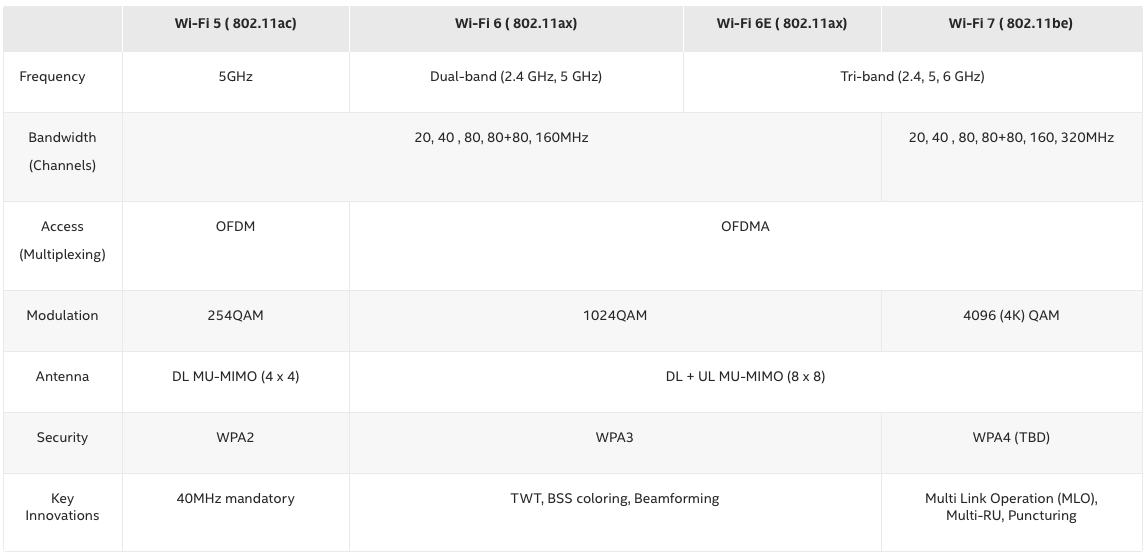Intel's Wi-Fi 7 Adapters, Chipsets Arriving Soon
Wi-Fi 7 is almost here. Kind of.
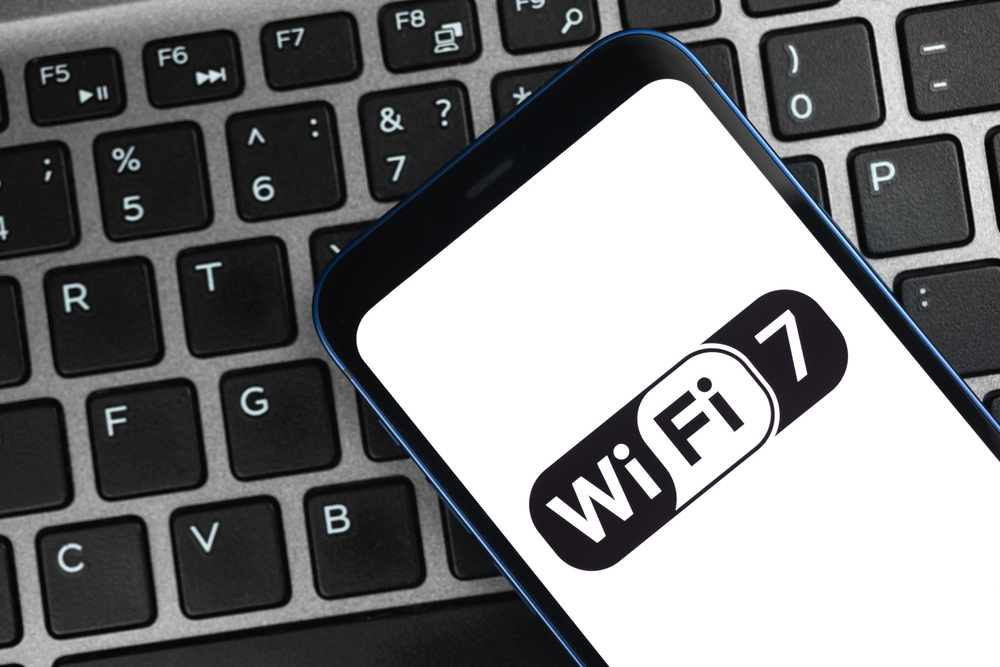
Although the Institute of Electrical and Electronics Engineers (IEEE) yet has to formally ratify the Wi-Fi 7 (802.11be) specification, the technology is coming to market. Intel has already unveiled its first Wi-Fi 7 controllers and adapters, which will be coming to the market in various forms this year.
Intel currently lists two M.2-2230 draft Wi-Fi 7 adapters (as noticed by @ghost_motley): the Intel BE200 and the Intel BE202. Both adapters support 2x2 TX/RX streams, use 2.4 GHz, 5 GHz, and 6 GHz bands, and the BE200 has a maximum speed of 5 Gbit/s, which is significantly below the maximum transfer rate supported by the standard. The exact differences between the two parts is unknown at this point, but Intel claims that the BE200 is Wi-Fi 7 pre-certified. Both Intel's BE200 and BE202 support PCIe and USB interfaces and can be used for desktop motherboards and laptops.
The BE200 will be used by the upcoming Gigabyte Aorus Z790 Master X motherboard (PCB revision 1.2), as noticed by @momomo_us. Meanwhile, some other versions of the platform will use Qualcomm's Wi-Fi 7 QCNCM865 (PCB rev. 1.0) and MediaTek's Wi-Fi 7 MT7927, RZ738 (PCB rev. 1.1). To take advantage of Wi-Fi 7, users will also need to use Wi-Fi 7-compliant routers and access points.
Wi-Fi 7 promises a maximum aggregated bitrate of 40 Gbit/s, positioning it as a potential successor to wired Ethernet for the majority of users. To achieve these impressive rates, Wi-Fi 7 will harness three frequency bands: 2.40 GHz, 5 GHz, and 6 GHz, will expand channel width to 320 MHz, and incorporate 4096-QAM. However, many client devices will likely operate at slower speeds, as Intel's BE200 example demonstrates.
The technology will also build upon the foundations set by its predecessors. It will mandatorily support features like MU-MIMO (Multi-User Multiple-Input Multiple-Output) and OFDMA (Orthogonal Frequency-Division Multiple Access), which were introduced and supported by Wi-Fi 6 and Wi-Fi 6E. These enhancements are expected to optimize the efficiency and capacity of wireless connections.
Intel originally envisioned Wi-Fi 7's application in bandwidth-demanding tasks, especially in augmented reality (AR) and virtual reality (VR) headsets that used Intel's WiGig technology. While the IEEE plans to formally adopt the IEEE 802.11be specification by 2025, Intel and others are optimistic about the technology's performance and have already launched their first Wi-Fi 7-compliant controllers and adapters.
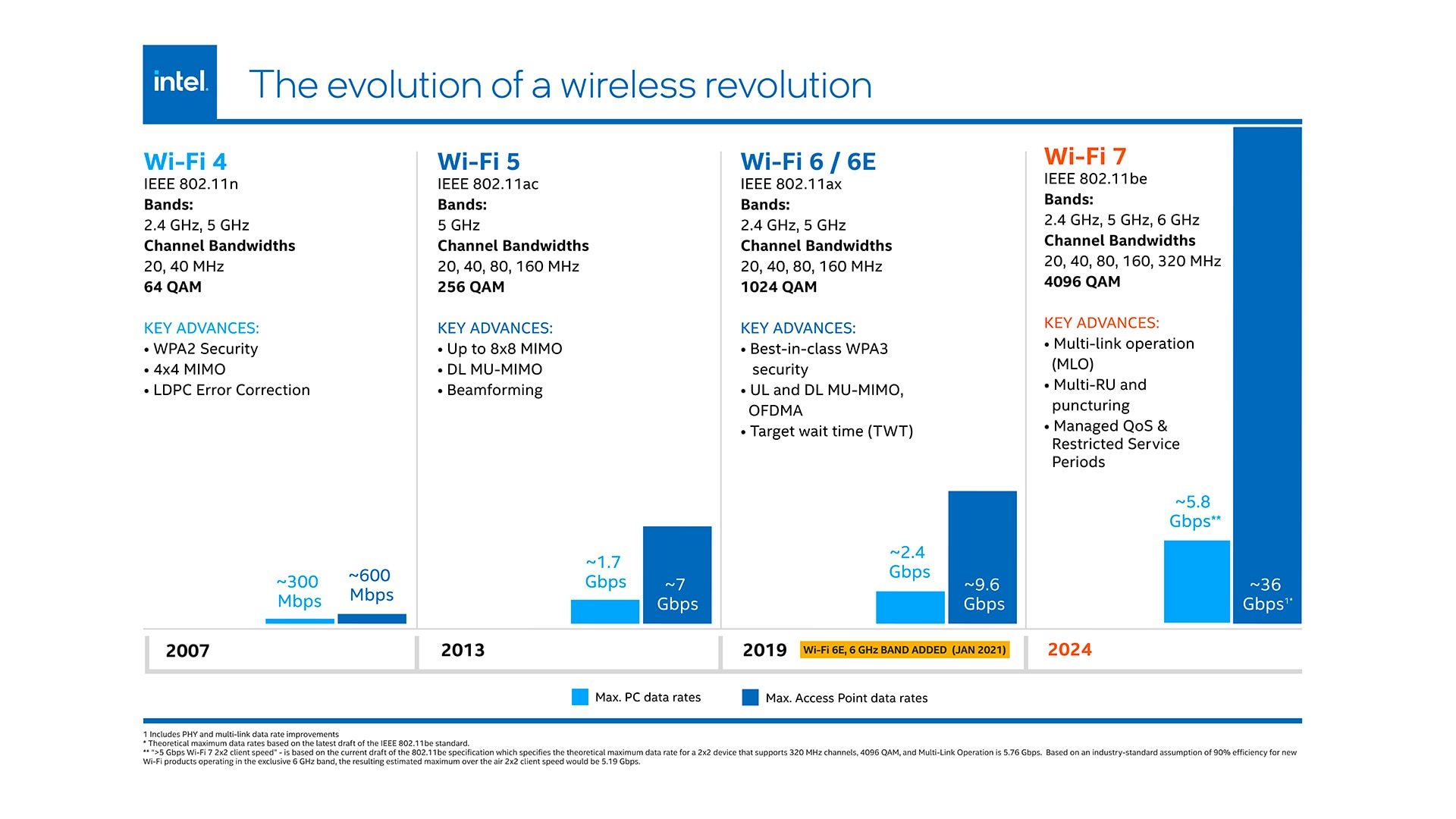
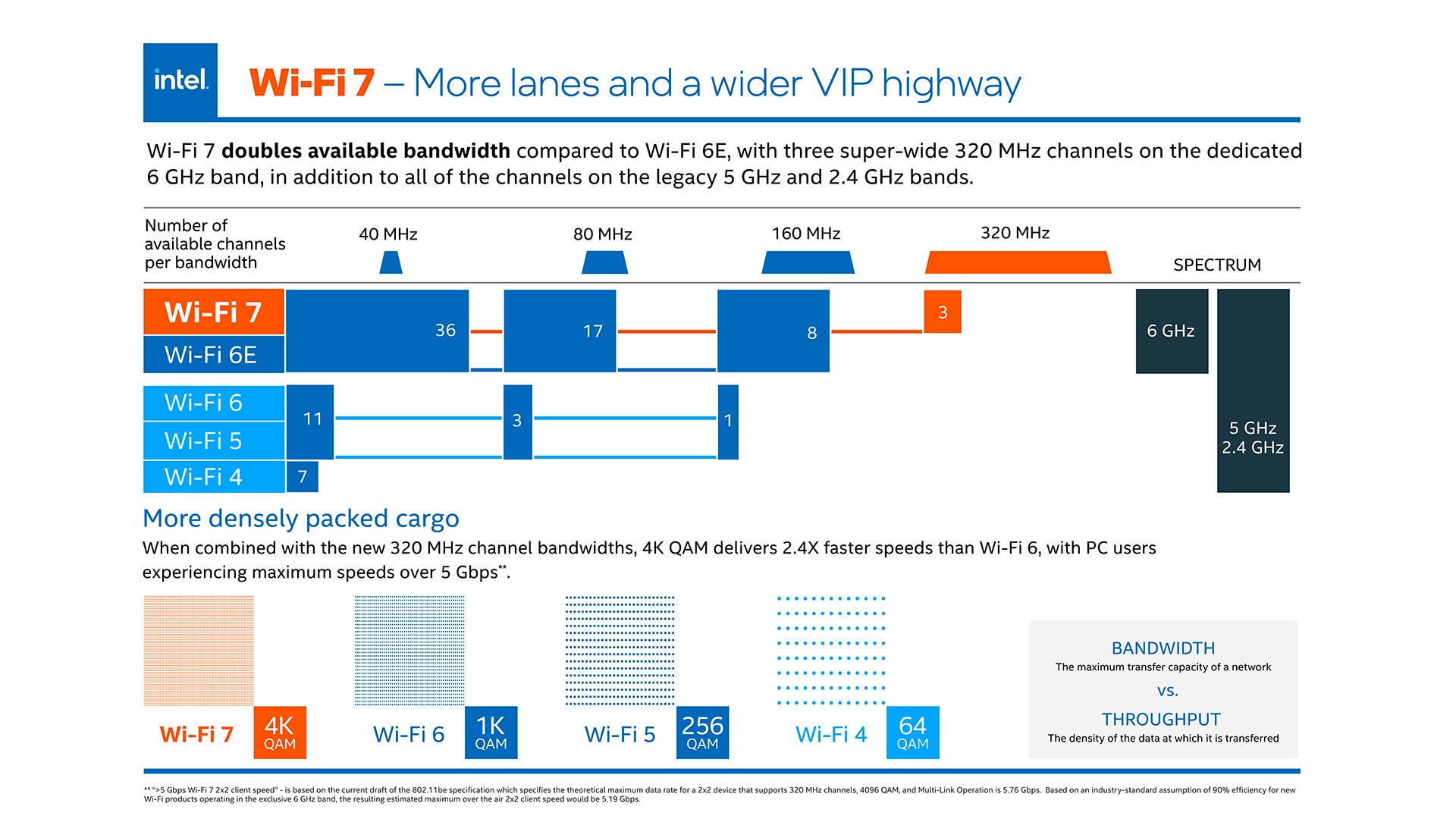

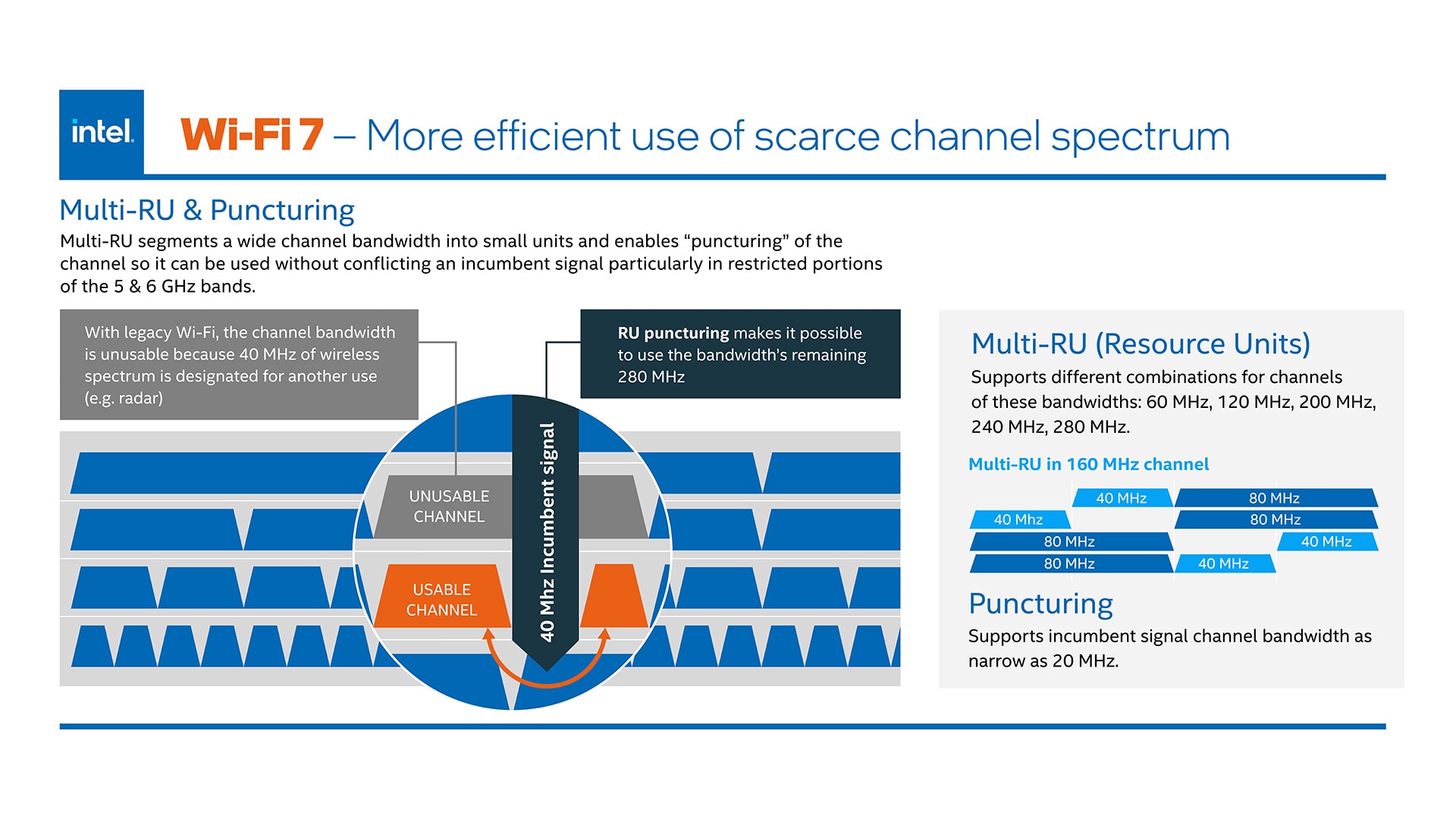
That said, it will likely be years before Wi-Fi 7 devices are ubiquitous. Full certification of the spec isn't expected until sometime in 2024, with the major rollout of compatible client devices coming after that. So if you recently bought a Wi-Fi 6 or 6E router, it should serve you well for now. But a year or two down the road, you may want to consider upgrading -- especially if you have a need for wireless speed and a desire to be on the cutting edge of consumer tech.
Get Tom's Hardware's best news and in-depth reviews, straight to your inbox.

Anton Shilov is a contributing writer at Tom’s Hardware. Over the past couple of decades, he has covered everything from CPUs and GPUs to supercomputers and from modern process technologies and latest fab tools to high-tech industry trends.
-
SyCoREAPER FFS. Devices are just finally getting spec'd WiFi 6, barely any have WiFi 6e and now we are moving to WiFi 7.Reply
This whole push just for the sake of push is getting old.
Just like there is already talk of 6G Wireless.
Enough already let tech mature a bit. If new standards keep being released so quickly, that's how you get halfbaked implementations or overly expensive hardware. -
Sleepy_Hollowed Reply
But if they don’t release something new quickly, how will they justify the Intel badge costing more for NICs?!?sycoreaper said:FFS. Devices are just finally getting spec'd WiFi 6, barely any have WiFi 6e and now we are moving to WiFi 7.
This whole push just for the sake of push is getting old.
Just like there is already talk of 6G Wireless.
Enough already let tech mature a bit. If new standards keep being released so quickly, that's how you get halfbaked implementations or overly expensive hardware.
Will you think of the billionaire shareholders’ private jets?!? -
DougMcC Reply
I think you can expect a significant slowdown after wifi7. Until 6E wireless was really inadequate for many users. With wifi7 you'll have a standard that meets all the needs of 95% of households.sycoreaper said:FFS. Devices are just finally getting spec'd WiFi 6, barely any have WiFi 6e and now we are moving to WiFi 7.
This whole push just for the sake of push is getting old.
Just like there is already talk of 6G Wireless.
Enough already let tech mature a bit. If new standards keep being released so quickly, that's how you get halfbaked implementations or overly expensive hardware. -
brandonjclark Reply
Dude, people have been saying that about every implementation of WiFi since version 2.DougMcC said:With wifi(x) you'll have a standard that meets all the needs of 95% of households.
I'm going to go out on a limb and say that everyone's needs are already mostly met at home, they just have poor knowledge of coverage requirements. -
peachpuff I wish the network port would get this much love, we're finally getting 2.5gbps ports in mobos but network routers and switches are still behind and pricey.Reply -
bourgeoisdude Honestly, most people don't even have over 1gbps Internet at home. Decent WiFi 5 (as long as it is wave 2) covers home use well even today.Reply
WiFi 6 and 6e are good enterprise use case, but 6e requires WPA3 and most don't require that yet as there are still many devices that do not support it. Also, 6E is close, but not yet certified for outdoor use in the US so its use is limited. "Futureproofing" is fine, more is better, but I don't really see a widespread use case for WiFi 7 yet. I'd stay away from the current WiFi 7 products since until it is formally ratified no telling how well it will work for compatibility. -
Zaranthos Have to wonder about these massive increases in bandwidth with the goal of use in VR being strapped to your face. There are already concerns about EMF and wifi having potential health implications at least for some people. It likely has a net negative effect on us all but healthy people likely resist or repair the damage incurred fast enough to not incur noticeable short term damage. Will I be strapping VR to my face anytime soon? I don't think so. I'm also more likely to use slower wired connections that are more than fast enough and less prone to interference or latency issues anyway.Reply
https://pubmed.ncbi.nlm.nih.gov/24192494/ -
PlutoDelic Reply
Absolutely. I design Wi-Fi networks and have done a numerous High Density Stadiums and Malls. Standalone Non-Public 5G will kill the enterprise Wi-Fi soon. With 2.4ghz being shoved to consumer IoT, 5 and 6ghz will be (already are) the typical household technology, and it will stall with WiFi 7 since there wont be a need to increase its capacity. The channel bonds in 5/6ghz will still give us the 2.4ghz nightmare of interference, and that is the only area where i see a topic of further research, but bandwidth wise, we're nearing the edge.DougMcC said:I think you can expect a significant slowdown after wifi7. Until 6E wireless was really inadequate for many users. With wifi7 you'll have a standard that meets all the needs of 95% of households.
